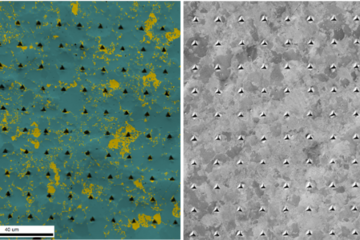All genres
1101.
Talk
Arthropod cuticle: A biological multifunctional composite used as template for multiscale modelling. 11th National Congress on Theoretical and Applied Mechanics NCTAM 2009, Borovets, Bulgaria (2009)
1102.
Talk
Combining Experimental and Computational Methods in the Development of Fe3Al-based Materials. 5th Discussion Meeting on the Development of Innovative Iron Aluminium Alloys (FEAL 2009), Prague, Czech Republic (2009)
1103.
Talk
Wasserstoff in X-IP Stahl (ab initio): Einfluss von Defekten auf die Energetik und Dynamik von Wasserstoff in Manganstählen. X-IP Workshop, Duisburg, Germany (2009)
1104.
Talk
Density functional theory in a nutshell. MD Seminar Series, Los Angeles, CA, USA (2009)
1105.
Talk
Material- und Werkstoffdesign am Computer: Möglichkeiten, Grenzen und Perspektiven. Kolloquium at Akademie der Wissenschaften, Düsseldorf, Germany (2009)
1106.
Talk
Influence of long-range C-C elastic interactions on the structural stability of dilute Fe-C solid solutions. Invited Talk at ICAMS, Bochum, Germany (2009)
1107.
Talk
Using Ab Initio Calculations in Designing BCC Mg–Li Alloys for Ultra Light-Weight Applications. THERMEC'2009: International Conference on PROCESSING & MANUFACTURING OF ADVANCED MATERIALS, Berlin, Germany (2009)
1108.
Talk
First principles simulation of thermodynamic properties of iron and iron-based alloys. Thermec'2009. International conference on processing & manufacturing of advanced materials, Berlin, Germany (2009)
1109.
Talk
What can EPR hyperfine parameters tell about the Si dangling bond? - A theoretical study. International conference on amorphous and nanoporous semiconductors (ICANS) 23, Utrecht, Netherlands (2009)
1110.
Talk
Theory guided design of bcc Mg-Li alloys for ultra-light weight applications. ICSMA 15: International Conference on the Strength of Materials, Dresden, Germany (2009)
1111.
Talk
Multi-physical alloy approaches to solid solution strengthening of Al. 15th International Conference of Strength of Materials, Dresden, Germany (2009)
1112.
Talk
Hierarchical modeling of the mechanical properties of lobster cuticle from the nanoscale up to the macroscale. ICSMA 15: International Conference on the Strength of Materials, Dresden, Germany (2009)
1113.
Talk
The accuracy of first principles methods inpredicting thermodynamic properties of metals. XVIII International Material Research Conference, Cancun, Mexico (2009)
1114.
Talk
Overview of the crystal plasticity finite element method. THERMEC 2009, Berlin, Germany (2009)
1115.
Talk
Fundamental materials-design limits in ultra light-weight Mg-Li alloys determined from ab initio calculations. Seminar in the Department of Low Dimensional Structures and Metastable Phases at the Max Planck Institute for Metals Research, Stuttgart, Germany (2009)
1116.
Talk
Ab initio determined materials-design limits in ultra light-weight Mg-Li alloys. Seminar in the Department of Strukture at the Institute of Physics of Materials of the Academy of Sciences of the Czech Republic and Institute of Chemistry of the Faculty of Sciences of Masaryk University, Brno, Czech Republic (2009)
1117.
Talk
Ab-initio based multi-scale approaches to the elasticity of polycrystals. Seminar at the Department of Physical Metallurgy and Materials Testing at Montan Universität Leoben, Leoben, Austria (2009)
1118.
Talk
Ab initio calculation of phase boundaries in iron along the bcc-fcc transformation path and magnetism of iron overlayers. Seminar at the Department of Materials Physics at Montan Universität Leoben, Leoben, Austria (2009)
1119.
Talk
Materials Design based on Ab Initio Thermodynamics: Status, Perspectives, and Trends. Colloquium Talk at Institut für Materialprüfung, Werkstoffkunde und Festigkeitslehre, Universität Stuttgart, Stuttgart, Germany (2009)
1120.
Talk
Atomistic calculations of interfaces: Bridging the relevant scales. Institute’s Colloquium, Institut für Gesteinshüttenkunde, Aachen, Germany (2009)











